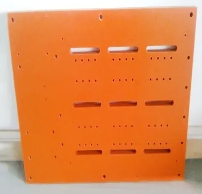- 17
- Jan
What are the applications of SMC insulation board in the field of wireless communication?
What are the applications of SMC insulation board in the field of wireless communication?
A variety of antennas are widely used in the field of wireless communication. Compared with metal materials, FRP materials have the advantages of light weight, convenient processing, transportation and installation, low price, anti-corrosion, and good elasticity. Therefore, FRP materials are used in the manufacture of many antennas.

Among the eye-catching are various types of fiberglass reflector antennas. Parabolic antennas are commonly used in reflector antennas, which have excellent directivity and are a high-gain antenna. FRP itself cannot reflect electromagnetic waves. When a metal mesh cloth or a metal film is coated on its surface, it becomes a good reflecting surface.
When the glass fiber reinforced plastic is formed on a well-shaped mold, a high-precision reflective surface can be easily manufactured, which has high gain and low cost. For the convenience of manufacturing and transportation, large-scale FRP reflectors are often decomposed into many smaller units, which are formed as a single piece, and then assembled in the field; for large-scale FRP reflectors, they can often be made into a sandwich structure, while small FRP reflectors generally do not need to be clamped. The core structure can be directly formed under the premise of pre-installed reinforcing ribs on the back to meet the rigidity requirements.
At present, the main molding methods of FRP reflectors are hand lay-up and SMC molding. Due to the superior performance of SMC materials and SMC molding process, it is more advanced than hand lay-up, but its investment is large, and SMC products are more suitable for mass production. For example, the domestic satellite TV receiving antennas in small reflector antennas have great market potential, and they have been mass-produced and applied in the United States, Japan, South Korea, Taiwan, and Hong Kong.
Therefore, the application of SMC materials in this industry has considerable development prospects. According to reports, my country has begun to produce six specifications of SMC antennas since 1991, including two types of receiving antennas, including radio series and satellite TV series. Among them, the radio series are already in the country. Sales, and the satellite TV series are mainly exported abroad, because the antenna and system in the country must be approved by the security department before installation and use, which affects its promotion in the market. The application is not very wide, but the reflective surface of other materials is the main.
